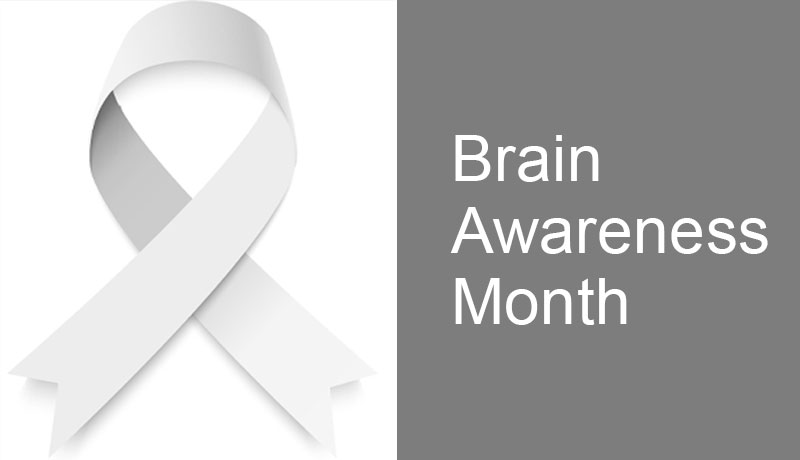May marks Brain Tumor Awareness Month (BTAM), an annual recognition of what we deal with year-round at Advanced Neurosurgery Associates (ANA).
Since this subject is so near and dear to our hearts, we eagerly welcome the opportunity to help the National Brain Tumor Society (NBTS), promote community awareness of both pediatric and adult brain tumors. NBTS is the largest nonprofit in the United States dedicated to the brain tumor community.
‘Go Gray in May’
The NBTS organization, which is responsible for and spearheads BTAM, organizes events and activities to raise awareness for #GrayMay, the color and month that symbolize their movement to conquer brain tumors.
The events conclude on May 27, the ‘National Day of Gray‘, where they encourage people to #GograyinMay by sharing stories and helping raise money as they honor patients and their caregivers.
The theme emphasizes their mission to find a cure for brain tumors, where the ‘gray area’ signifies the difference between the ‘extraordinary darkness and hope’ of current treatment options. Each unique experience represents a point on the #TheGrayscale.
Brain Tumor Awareness Month involves the contributions of individuals and organizations from both inside and outside of the brain tumor community. In addition to building awareness for the cause, the effort largely focuses on advancing research and public policy. It’s all in the hopes of making strides to overcome a devastating disease that impacts nearly 700,000 Americans and millions more worldwide.
Brain Tumor Awareness Month Facts
According to the NBTS, brain tumors are one of the
- In 2021 alone, it is estimated that almost 85,000 people will receive a primary brain tumor diagnosis, with only a 36% five-year survival rate for patients with malignant tumors.
- Some 14,000 children in the US are estimated to have a primary brain tumor.
- For children under 19, brain tumors have the highest death rate of all cancers.
- It is estimated some 18,600 people will die from brain tumors in the US in 2021.
- Some 30% of brain tumors are malignant.
On the Horizon
At ANA, we join the scientific community in tracking and working toward continual advances in the detection and treatment of brain cancer. Our efforts to mark Brain Tumor Awareness Month also revolve around reviewing advances in the field such as:
Enhanced imaging tests
New imaging scan techniques are vital for initial detection, as well as tracking treatment progress and tumor growth or recurrence.
Biomarkers
These are indicators of a tumor that are found in blood, urine or body tissue. They can be used to detect brain cancer before symptoms develop. A recent study reported initial positive results testing a new biomarker and emerging vaccine for glioma, a common type of brain cancer.
Immunotherapy
This type of therapy is designed to improve or restore immune system function by use of substances either made by the body or in a laboratory. The technique is meant to fight cancer by strengthening natural defenses. Immunotherapy has made significant progress and continues to be tested in clinical trials.
Oncolytic virus therapy
Meant to combat the side effects of traditional treatments (i.e., chemotherapy and radiotherapy), there are currently 125 oncolytic virus therapy clinical trials for various cancers, dominated by the US with some 50 trials. This therapeutic method is also being researched for brain tumors. For example, clinical trials are testing the application of the polio virus to treating brain cancer.
Targeted therapy
This treatment focuses on defective genes or proteins that contribute to cancer growth and development. It targets the way tumors grow or spread and how tumor cells die. Targeted therapies benefit from the use of advanced brain mapping.
Blood-brain barrier disruption
By temporarily disrupting the brain’s natural protective barrier, this treatment allows chemotherapy to enter the brain from the bloodstream more easily.
New drugs and combinations of drugs
Various new drugs are being tested for both pediatric and adult brain tumors. This includes the possible use of drugs for brain tumors that are currently being used for other cancers. It is important to continually develop this area, as tumors can become resistant to chemotherapy. This requires additional research for tumor cell resistance treatment.
Genetic therapy and research
This technique seeks to repair or replace abnormal genes that lead to tumor growth. Researchers are also seeking to establish a connection between genetics and brain cancer, such as glioblastoma. Recently, 13 new genetic markers were tied to gliomas. This is in addition to ongoing research on other genetic connections to this disease.
Raising Awareness for Brain Cancer
In honor of Brain Tumor Awareness Month, the NBTS is urging all brain cancer research supporters to adopt its official color and “Go Gray in May!”
At ANA, we encourage you to wear your gray while exploring the variety of ways you can take action and spread the word. As the NBTS slogan states: ‘Together, we are stronger than this disease.”

ANA is a team of expert neurosurgeons and medical professionals, who combine their decades of knowledge to provide information, events, and articles on a range of neurological conditions.



